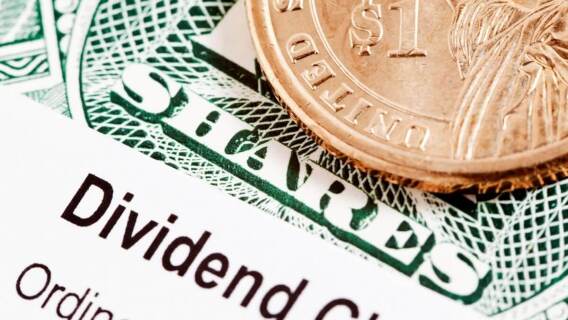After generating total returns (including dividends) of 26.3% in 2023, 25.0% in 2024 and 17.8% so far in 2025, valuations in the S&P are getting stretched. Although bull markets rarely end after two or three years because of valuation, returns could be far milder going forward.
After all, the long-term total returns for the S&P 500 only average about 10.5% each year.
A flatter market bodes well for conservative dividend stocks, as the dividends account for a greater portion of total returns. In addition, many defensive dividend stocks have had a rough time for most of the last few years, until recently. But these stocks are much more cheaply valued than the overall market and now have some momentum.
[text_ad]
Here are a few good conservative dividend stocks to consider.
3 Conservative Dividend Stocks for 2026
Enterprise Product Partners L.P. (EPD)
Yield: 6.7%
Enterprise Product Partners is one of the largest midstream energy companies and Master Limited Partnerships in the country, with a vast portfolio of service assets connected to the heart of American Energy Production. It is connected to every major U.S. shale basin and 90% of American refiners east of the Rockies and offers export facilities in the Gulf of America.
The natural gas story is gaining traction as demand is skyrocketing because of soaring electricity demand from data centers and rapidly growing exports. It’s a big reason why energy has remained solid in a faltering market.
Current assets include the following:
- 50,000 miles of pipeline
- 300 mmBbls of liquids storage
- 21 deepwater docks
- 45 natural gas processing trains
- 26 fractionators
As a midstream energy partnership, Enterprise is not reliant on volatile commodity prices because it generates about 80% of revenue from fees for storing, processing, and transporting oil and gas. They collect tolls on the U.S. energy highway at a time when production is likely to increase substantially.
The first thing that probably comes to mind when considering EPD is the distribution. EPD currently pays a $2.18 annual dividend, which translates to a 6.7% yield at the current price. Is that massive yield safe?
As an MLP, Enterprise pays no income tax at the corporate level and pays out the bulk of earnings in the form of distributions. The payout ratio has been in the 65% to 80% range over the past few years, which is lower than most MLPs and enables the partnership to invest its own capital in growth projects at lower cost.
EPD has performed very well over the last several years. Over the past three full calendar years (2022, 2023, and 2024), EPD returned 78% with distributions reinvested compared to a return of just 28% for the S&P 500 over the same period. The MLP provided triple the market returns with just a fraction of the volatility. Yet, despite the recent success, EPD still sells well below the 2014 high with much higher earnings and a PE ratio of only 12 times. It also has a beta of just .66, meaning it is a third less volatile than the overall market.
Enterprise is on the cusp of an earnings growth spurt. The partnership has $6 billion in expansion projects coming online in the coming quarters. The new capacity should significantly expand cash flow and earnings in the next two quarters and well beyond.
Not only is Enterprise on the cusp of a huge pick-up in earnings growth, it’s also dirt cheap in an expensive market. EPD sells at a PE ratio of just 12. The distributions will continue to flow in any kind of market. And the price has also proven resilient amidst inflation, rising interest rates, and a slowing economy.
Realty Income (O)
Yield: 5.6%
Realty Income (O) is one of the highest-quality and best-run REITs on the market. Cash flow from the company’s portfolio of properties has enabled the company to amass a phenomenal track record of paying dividends—to such an extent that Realty Income actually has the audacity to refer to itself as “The Monthly Dividend Company.”
Despite trouble at a very small percentage of its properties (namely movie theaters and fitness centers), the REIT actually grew year-over-year revenues during the pandemic. The stock has been unjustifiably held back because of its association with retail properties. As a result, the stock is still trading below pre-pandemic highs.
Fed rate cuts are a welcome development for this legendary income REIT. O had gone mostly sideways all year but recently broke out to the highest price in nearly a year, before pulling back again. The table should be set going forward.
The company’s most recent earnings were solid, and the REIT slightly raised guidance. Realty also just closed a $9.5 billion acquisition that adds 15,600 commercial properties to the portfolio. O is still attractively valued and should have some pent-up upside if and when interest rates decline significantly.
McKesson Corporation (MCK)
Yield: 0.4%
The pandemic aftermath made us acutely aware of the importance of supply chains, as disruptions caused short supplies and skyrocketing prices. Efficient distribution is what makes this whole consumer economy work.
McKesson Corporation (MCK) is a leading domestic wholesaler of branded, generic, and specialty pharmaceutical products. The company operates a supply chain that delivers products from 1,300 drug manufacturers to over 180,000 points of dispensation throughout the country. It supplies about one-third of the U.S. drug distribution market.
McKesson buys drugs from manufacturers, delivers them, and resells them to retailers at a profit. Established in 1833, the company has been honing the process for nearly two centuries. Naturally, it has strategic partnerships with companies like CVS (CVS), Walmart (WMT), and Rite Aid.
The extensive distribution network and enormous scale give McKesson tremendous bargaining leverage with suppliers and customers that can’t be easily duplicated by would-be competitors. That’s why the business is an oligopoly. McKesson, along with Cencora Inc. and Cardinal Health, accounts for 90% of the drug wholesale distribution market in the United States. In addition, there are very high switching costs among the providers, so they rarely lose business to the other two companies.
MCK has a stellar track record over the last several years. Over the last three- and five-year periods, MCK has returned 123% and 378% respectively, compared to 68% and 85% for the S&P over the same periods.
The stock isn’t quite as conservative as the other names on this list, but the business model is. You see, McKesson serves a market that grows all by itself because of the aging population. And that built-in tailwind more than makes up for the lower dividend yield.
If you’d like to learn more about the stocks I’m recommending to my subscribers for 2026, consider subscribing to Cabot Dividend Investor or Cabot Income Advisor.
[author_ad]
*This post has been updated from a previously published version.

